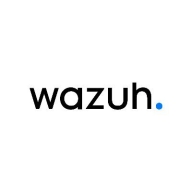

Wazuh and Google Chronicle Suite are significant competitors in the SIEM platform market, with Wazuh specializing in flexibility and open-source cost-effectiveness, and Google Chronicle Suite leading in advanced threat detection using AI and machine learning. Google Chronicle Suite may have the upper hand in advanced analytics and integration with Google's tools.
Features: Wazuh provides integration, ease of deployment, and comprehensive SIEM functions, MITRE ATT&CK correlation, and compliance management. Its flexibility is backed by built-in frameworks and extensive customization support. Google Chronicle Suite emphasizes speed in threat detection and analysis, comprehensive threat intelligence tools, and smooth integration with Google services.
Room for Improvement: Wazuh should enhance native threat intelligence, AI capabilities, and scalability for large enterprises, as well as simplify configuration and integrate better with cloud services. Google Chronicle Suite could reduce false positives and improve customization for alerts and dashboards. Both need enhancements in user-friendliness, with Google Chronicle Suite facing delays in near-time detection.
Ease of Deployment and Customer Service: Wazuh offers flexible deployment options across on-premises, cloud, and hybrid environments, with community support and helpful documentation compensating for limited direct support. Google Chronicle Suite focuses on cloud and hybrid deployments, providing rapid onboarding but facing customer service challenges and deployment delays.
Pricing and ROI: Wazuh's open-source nature provides major cost savings, ideal for smaller enterprises, with main expenses for supporting infrastructure. It exhibits high ROI by cutting detection and response times. Google Chronicle Suite offers competitive pricing but costs can mount with data volume for larger enterprises. Wazuh is favorable for zero software costs, while Google Chronicle Suite benefits from a flexible pay-as-you-go model.
I have seen value in security cost savings with Wazuh, as using proprietary EDR versions could save us substantial money.
We are a critical project for them at this moment, and they provide excellent service.
They are slow, and the initial responses often require more information rather than providing helpful solutions.
I have faced challenges with technical support from Sentinel, though Sentinel support is better than Google's, while Splunk support is also not that great.
They responded quickly, which was crucial as I was on a time constraint.
We use the open-source version of Wazuh, which does not provide paid support.
The documentation is good and provides clear instructions, though it's targeted at those with technical backgrounds.
I rate the scalability of Google Chronicle Suite as ten out of ten.
Google Chronicle Suite is very scalable, being a cloud-based solution.
In the cloud-native space, the problem is that if you require additional devices, you might have to work on custom applications.
It can accommodate thousands of endpoints on one instance, and multiple instances can run for different clients.
Currently, I don't see any limitations in terms of scalability as Wazuh can still connect many endpoints.
Scalability depends on the configuration and the infrastructure resources like compute and memory we allocate.
I rate the stability of Google Chronicle Suite as a nine, as I have not encountered any stability issues.
The stability of Wazuh is strong, with no issues stemming from the solution itself.
The stability of Wazuh is largely dependent on maintenance.
The indexer frequently times out, requiring system restarts.
The graphical user interface could be improved to enhance user experience.
The UI is the primary challenge in need of improvement.
Google Chronicle Suite lacks near time detection.
Machine learning is needed along with understanding user behavior and behavioral patterns.
The integration modules are insufficiently developed, necessitating the creation of custom integration solutions using tools like Logstash and PubSub.
I think Wazuh should improve by introducing AI functionalities, as it would be beneficial to see AI incorporated in the threat hunting and detection functionalities.
It's neither expensive nor cheap, and I believe it is a justified price for the features offered.
Compared to a SIEM like Microsoft Sentinel, it is much more affordable.
I experience Chronicle as less expensive and less complicated than Azure.
Wazuh is completely free of charge.
I would definitely recommend Wazuh, especially considering Fortinet's licensing model which is confusing and overpriced in my opinion.
Totaling around two lakh Indian rupees per month.
They also combine their source solution into one product, allowing for out-of-the-box playbook creation and incident response.
The AI infused into the platform helps in investigations and rule creation.
The automated response feature allows for immediate actions like isolating infected machines or blocking malicious IP addresses.
Wazuh is a SIEM tool that is highly customizable and versatile.
The system allows us to monitor endpoints effectively and collect security data that can be utilized across other platforms such as SOAR.
With this open source tool, organizations can establish their own customized setup.
| Product | Market Share (%) |
|---|---|
| Wazuh | 8.3% |
| Google Chronicle Suite | 2.2% |
| Other | 89.5% |

| Company Size | Count |
|---|---|
| Small Business | 9 |
| Midsize Enterprise | 1 |
| Large Enterprise | 6 |
| Company Size | Count |
|---|---|
| Small Business | 27 |
| Midsize Enterprise | 15 |
| Large Enterprise | 8 |
Organizations primarily leverage Google Chronicle Suite for centralized log management, threat intelligence, and endpoint security, addressing MDR requirements with continuous monitoring.
Google Chronicle Suite supports storage, security, and alert checking. Utilizing log information to generate alerts and integration with search engines, it monitors network and login issues. It is a choice for consultants on client projects, and partners handle its global resale and implementation.
What are the key features of Google Chronicle Suite?Industries employ Google Chronicle Suite for its robust security measures and log management. It is especially vital for IT, finance, healthcare, and any sector needing stringent security and compliance. Consultants find it essential for tailoring security protocols in client projects, while partners ensure seamless implementation across regions.
Wazuh offers an open-source platform designed for seamless integration into diverse environments, making it ideal for enhancing security infrastructure. Its features include log monitoring, compliance support, and real-time threat detection, providing effective cybersecurity management.
Wazuh stands out for its ability to integrate easily with Kubernetes, cloud-native infrastructures, and various SIEM platforms like ELK. It features robust MITRE ATT&CK correlation, comprehensive log monitoring capabilities, and detailed reporting dashboards. Users benefit from its file integrity monitoring and endpoint detection and response (EDR) capabilities, which streamline compliance and vulnerability assessments. While appreciated for its customization and easy deployment, room for improvement exists in scalability, particularly in the free version, and in areas such as threat intelligence integration, cloud integration, and container security. The platform is acknowledged for its strong documentation and technical support.
What are the key features of Wazuh?In industries like finance, healthcare, and technology, Wazuh is utilized for its capabilities in log aggregation, threat detection, and vulnerability management. Companies often implement its features to ensure compliance with stringent regulations and to enhance security practices across cloud environments. By leveraging its integration capabilities, organizations can achieve unified security management, ensuring comprehensive protection of their digital assets.
We monitor all Security Information and Event Management (SIEM) reviews to prevent fraudulent reviews and keep review quality high. We do not post reviews by company employees or direct competitors. We validate each review for authenticity via cross-reference with LinkedIn, and personal follow-up with the reviewer when necessary.